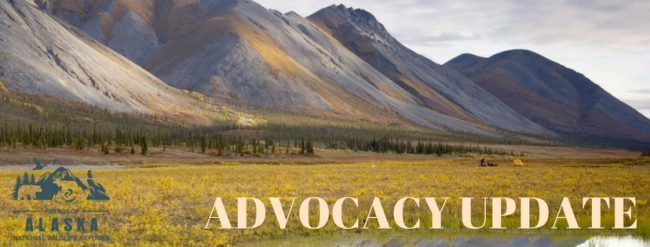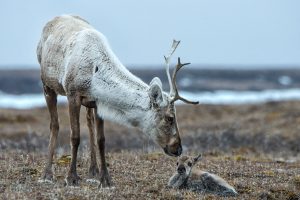By: David Raskin, Friends President  Secretary of Interior Bernhardt has instructed DOI personnel to push forward in spite of the Covid-19 epidemic and shutdowns. However, the dramatic drop in oil consumption and the glut of oil that has strained the US storage capacity have increased the problems for the Trump administration’s push to expand oil and gas development.
Secretary of Interior Bernhardt has instructed DOI personnel to push forward in spite of the Covid-19 epidemic and shutdowns. However, the dramatic drop in oil consumption and the glut of oil that has strained the US storage capacity have increased the problems for the Trump administration’s push to expand oil and gas development.
Arctic National Wildlife Refuge
We still have no specific update on when the Secretary of Interior will issue the Record of Decision (ROD). There are indications that DOI is having difficulty overcoming the problems posed by the threats to polar bears that would accompany oil and gas activity on the Coastal Plain. The excellent study authored by scientists at the U.S. Fish and Wildlife Service and the U.S. Geological Survey (Seismic survey design and potential impacts to maternal polar bear dens) demonstrates the extreme difficulty of legally conducting oil exploration in critical denning habitat for the threatened Southern Beaufort Sea polar bears, which increasingly den on the coastal plain due to the climate-driven loss of sea ice. This research compounds the many problems faced by the proposed oil leasing program.
The Arctic Refuge Defense Campaign’s meetings with executives of oil companies and financial institutions concerning the dangers of Arctic drilling and the financial risks of supporting such efforts continue to produce impressive results. Four of the five major US financial institutions (Goldman Sachs, Morgan Stanley, JP Morgan Chase and Wells Fargo) have now adopted policies that prohibit financing of oil and gas development in the Arctic, only Bank of America has not acted. The crash of oil prices has created problems for the pending sale of BP’s Alaska assets to Hilcorp. These are very positive developments in the decades-long battle to save and preserve the Arctic Refuge and its subsistence and cultural values!
The U.S. Fish and Wildlife Service published proposed regulations in the Federal Register to improve hunting and fishing opportunities across the National Wildlife Refuge System. Included in this broader package is a proposal that would prohibit the use of domestic sheep, goats, and camelids (i.e., llamas and alpacas) on Arctic National Wildlife Refuge lands due to concerns about disease transmission to Dall Sheep and other wildlife. Please click here to review the proposed regulation and submit comments by June 8, 2020. There will be a virtual hearing Wednesday, May 13 starting at 3:00 PM (AST). Register in advance for this public hearing here.
After registering, you will receive a confirmation email containing the information needed to join the meeting.
Izembek National Wildlife Refuge
It seems that the Court is preparing to issue a decision in our federal lawsuit to stop the land transfer and road, and we look to another ruling in our favor. In the meantime, DOI issued a contract for the cultural and contaminants survey that is planned for September-October. No other on-the-ground activities are planned for the coming summer field season. We will provide updates as this lawsuit works its way through the legal process.
Kenai Predator Control and Hunting Regulations
The proposed Kenai Refuge predator control regulations still have not been released, but we continue to expect them soon. Meanwhile the continuing intervention in the litigation by Friends and our conservation partners supports the effort to protect brown bears and reasonable hunting restrictions promulgated for the Kenai National Wildlife Refuge and Wilderness in Alaska.

 The Arctic Refuge drilling proposal and Izembek Refuge battles continue, and we expect major events in the very near future.
The Arctic Refuge drilling proposal and Izembek Refuge battles continue, and we expect major events in the very near future.


